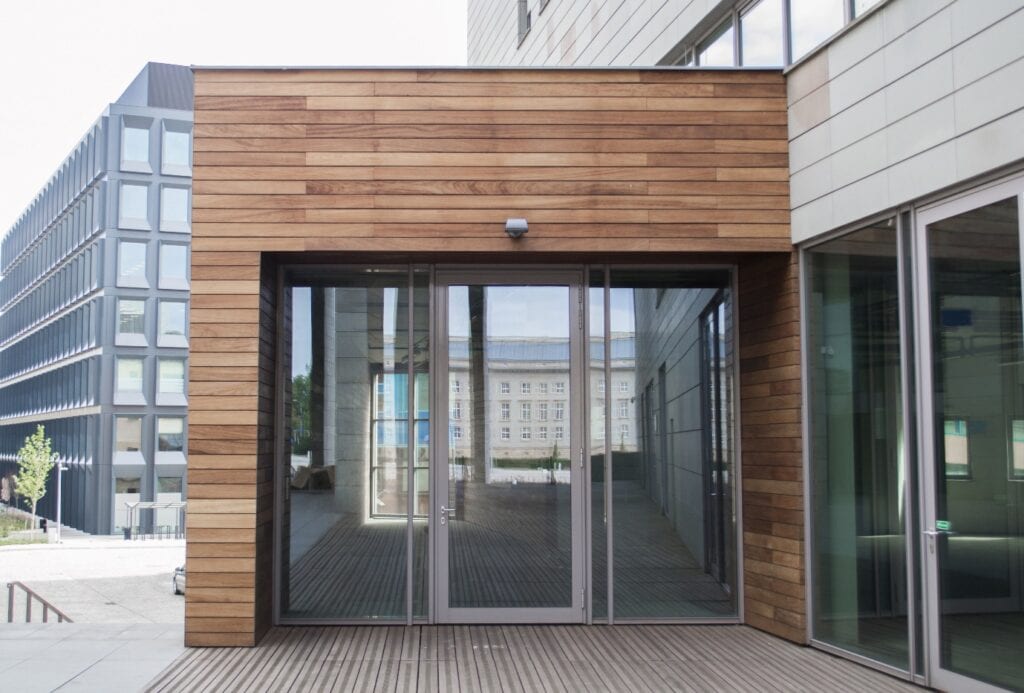Timber is a natural building material with a lot to offer. Architects are drawn to its textural beauty and sustainable harvesting practices. For commercial and residential projects alike, timber cladding is used to create visually compelling structures that harmonise with their environment.
If you’re new to architectural timber, you may have some questions about its durability and suitability for exterior applications. Below you will find answers to the 2 most common questions about timber cladding as well as links to further reading material.
1. What is the best timber to use for exterior cladding?
The Australian climate can be tough on building materials, so it makes sense to invest in durable cladding that can withstand the elements. Early aging of timber doesn’t typically come down to the species chosen.

Instead, the factors you should consider when choosing timber cladding are:
- The treatment processes used
- The design of the cladding profile
- The quality of the installation
- The suitability of the timber type for the specific application
What is timber treatment?
Timber cladding is made more durable by specific treatment processes. Preservatives are inserted into the timber cells to help the wood repel termites, fungi and other problems.
Why is design important?
Timber naturally expands and contracts in response to the environment. Cladding designs that allow for this natural movement tend to be more durable. Design techniques can also help improve the waterproofing of timber cladding.
Why does professional installation matter?
Professional installation means the timber cladding will be installed optimally, according to the manufacturer’s guidelines. Poor installations can affect the durability of timber cladding, especially if moisture problems arise.
Need more information?
For more information about choosing the right timber for exterior applications, check out this article on ‘what is the best timber to use for exterior cladding?’.
2. How long does timber cladding last?
When treated properly, designed optimally and installed correctly, timber cladding and other products such as timber decking have an excellent lifespan. A lot of factors play into how fast timber cladding ages, so for an accurate estimation it’s best to speak to a timber specialist about your specific project.
What happens to timber exposed to sunlight?
Timber cladding usually doesn’t require much maintenance. However, when exposed to UV rays, timber can lose its colour and become more grey or yellow in appearance. The discolouration is due to oxidation of the tannins inside the timber.
How to preserve the colour of timber cladding?
Sometimes the discolouration of timber cladding is embraced as part of the architectural design. However, if you want to preserve the natural colour of timber cladding, you can do so through regular maintenance, cleaning and re-oiling.
How often should timber cladding be oiled?
Oiling requirements vary from project to project. Typically it is best to re-oil timber cladding that is exposed to sunlight every 12-18 months to preserve its appearance.
Need more information?
Check out this more comprehensive article about how long timber cladding lasts and tips for preserving the aesthetic integrity of timber cladding.






